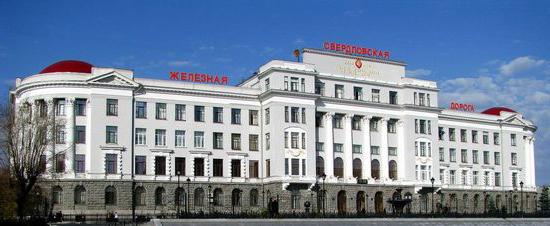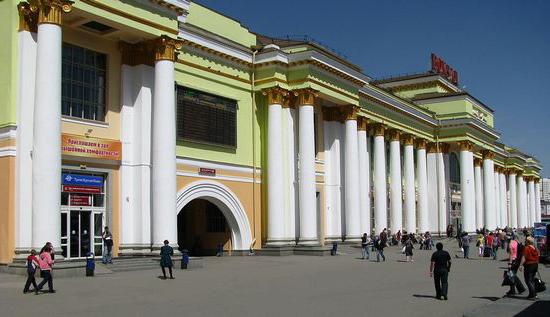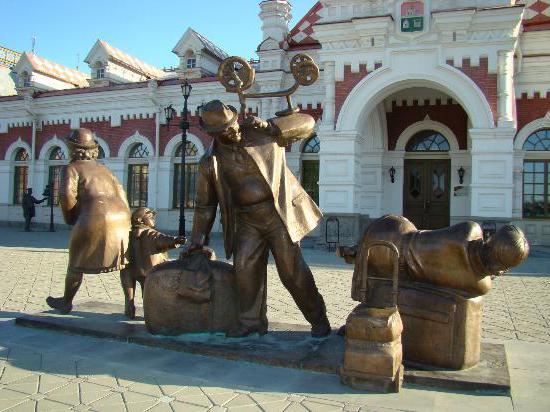In Russia there is a powerful transport complex - the Sverdlovsk Railway. This highway runs through the territory of Western Siberia and the Urals. Railways of the Sverdlovsk region are among the first three Russian Railways. Next, we learn about the history of the construction of the highway. The article will also talk about the unique museum of the Sverdlovsk Railway existing in Yekaterinburg.
General information
The Sverdlovsk branch of the railway ensures uninterrupted passage of trains from the north-western and central regions of our country to Kazakhstan, Siberia and the Far East. This highway is built in a special way. So, it borders with the South Ural, Gorky and West Siberian railways. This transport complex provides more than 9.5% of the total loading and unloading of highly profitable goods. Namely: oil, ferrous and non-ferrous metals, coal, construction and timber materials are transported. The Directorate of the Sverdlovsk Railway does everything possible to ensure the safety, continuity and comfort of transportation. The leader is A. Yu. Mironov, the first deputy chief is V.V. Iskorostensky. The chief engineer of SvZhD - I.O. Naboychenko Sverdlovsk Railway provides freight for more than 12,000 industrial companies. In addition, it serves about one and a half thousand access roads. The Sverdlovsk Regional Woodworking, Coal and Mining Companies have developed a network of small access lines and branches.

History of creation
The first project, according to which the Sverdlovsk railway was to be built, was put forward by businessman I.I. Lyubimov. This important event happened in 1868. At his suggestion, the scheme of the Sverdlovsk railway assumed a branch from Perm to Tobol, crossing such cities as Yekaterinburg, Kungur and Shadrinsk. After a short period of time, the government decided to conduct exploratory work on the ground. After that, the main road construction began. Such an important event was entrusted to the "Society of the Mining Railway". The main work on the alienation of lands, deforestation and demolition of buildings began in 1870. In the same period, they engaged in the construction of bridges, the construction of temporary roads and the construction of a telegraph.

After eight years of construction work, the first branch was opened with a length of 669 miles. Perm was the starting point of the journey, and the city of Yekaterinburg served as the final point. By the end of 1885, a railway line from Yekaterinburg to Tyumen was commissioned. And only at the beginning of 1888 this path was combined with the Gornozavodskaya road into one highway, which was called the Ural Railway. 1896 marked the end of the construction of a branch from Yekaterinburg to Chelyabinsk. Thanks to the creation of this line, the Sverdlovsk railway was merged with the Trans-Siberian direction. Due to the fact that the capacity of the mining site was extremely small, in 1906 they decided to lay a new line through the Urals. And after three years, the first trains went along this railway line. Over the next years, the Bogoslovskaya, Zapadno-Uralskaya and Omsk railways were added to the Perm Railway. Since the 30s of the last century, they have been subjected to several reorganizations. However, in the end, the Perm and Sverdlovsk branches were merged. This event happened in 1953.
Museum of the Sverdlovsk Railway
In 2003, a gallery of history, science and technology of the Sverdzhan Railway was opened at the station. For information, the old "harbor" for trains was designed by architect P.P. Schreiber. Currently, this building is a monument of history and culture of the XIX century.
Front Exposition
There is an open area in front of the building, on the territory of which there are a number of sculptures. These works of architecture embody the railway professions of various eras. For example, here you can see the statue of the station manager, who blows the bell notifies passengers about the departure of the train. Also, a group of "travelers" flaunts in front of the building. With this sculpture, the author illustrates the reality faced by passengers at the station. In addition, visual exhibits of the railway industry are located on the square in front of the museum. Here you can see a semaphore, a cart of railwaymen, designed to transport sleepers, a barrier equipped with a signal device and so on.
Exhibits
The internal exposition of the gallery is represented by objects of both technical and historical nature. When creating the first category, we decided to use the principle of the game. This approach to business was due to the fact that not all visitors understand the railway terminology. In view of this, the platform of the Yekaterinburg station of the 19th century was recreated. What is characteristic, the composition turned out to be extremely realistic and similar to the original. This effect was achieved thanks to the preserved photographs of the apron. On the platform, the authors of the exposition arranged passengers, benches, a stationary bell and even luggage. The historical part in the museum is represented by the first Russian steam locomotive, which was developed by the father and son of the Cherepanovs. However, this exposition is not limited to "old" exhibits. Museum visitors can familiarize themselves with modern railway achievements. For this purpose, detailed information on the construction of the first highways is presented here, the history of the formation and commissioning of the Perm and Ural Gornozavodskaya lines and so on is told. It is worth noting that the museum staff, when creating the expositions, sought to reflect historical and technical data in chronological sequence.

additional information
At the Yekaterinburg Museum of History, Science and Technology, models and models of rolling stock are widely represented. In addition, there are collections of visual exhibits. For example, visitors can familiarize themselves with the workplace of the driver of an electric locomotive L11. In addition, everyone is invited to study the mechanisms, tools and various devices used in the railway industry.
Conclusion
The visiting card of the SZD is considered to be the road museum of Yekaterinburg. What is characteristic, the exhibits presented in it will be of interest not only to the adult part of the population, but also to small visitors. The gallery performs two functions simultaneously. On the one hand, even a visitor uninformed in railway science can easily perceive the technical part of the compositions. And on the other hand, all the items in the gallery help a person expand his horizons, and in some cases even decide on the choice of a profession.